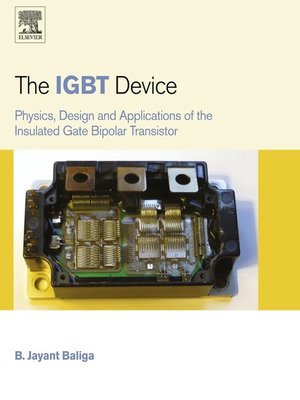The IGBT Device
ebook ∣ Physics, Design and Applications of the Insulated Gate Bipolar Transistor
By B. Jayant Baliga

Sign up to save your library
With an OverDrive account, you can save your favorite libraries for at-a-glance information about availability. Find out more about OverDrive accounts.
Find this title in Libby, the library reading app by OverDrive.



Search for a digital library with this title
Title found at these libraries:
| Library Name | Distance |
|---|---|
| Loading... |
The IGBT device has proved to be a highly important Power Semiconductor, providing the basis for adjustable speed motor drives (used in air conditioning and refrigeration and railway locomotives), electronic ignition systems for gasolinepowered motor vehicles and energy-saving compact fluorescent light bulbs. Recent applications include plasma displays (flat-screen TVs) and electric power transmission systems, alternative energy systems and energy storage. This book is the first available to cover the applications of the IGBT, and provide the essential information needed by applications engineers to design new products using the device, in sectors including consumer, industrial, lighting, transportation, medical and renewable energy.
The author, B. Jayant Baliga, invented the IGBT in 1980 while working for GE. His book will unlock IGBT for a new generation of engineering applications, making it essential reading for a wide audience of electrical engineers and design engineers, as well as an important publication for semiconductor specialists. - Essential design information for applications engineers utilizing IGBTs in the consumer, industrial, lighting, transportation, medical and renewable energy sectors.
- Readers will learn the methodology for the design of IGBT chips including edge terminations, cell topologies, gate layouts, and integrated current sensors.
- The first book to cover applications of the IGBT, a device manufactured around the world by more than a dozen companies with sales exceeding $5 Billion; written by the inventor of the device.






